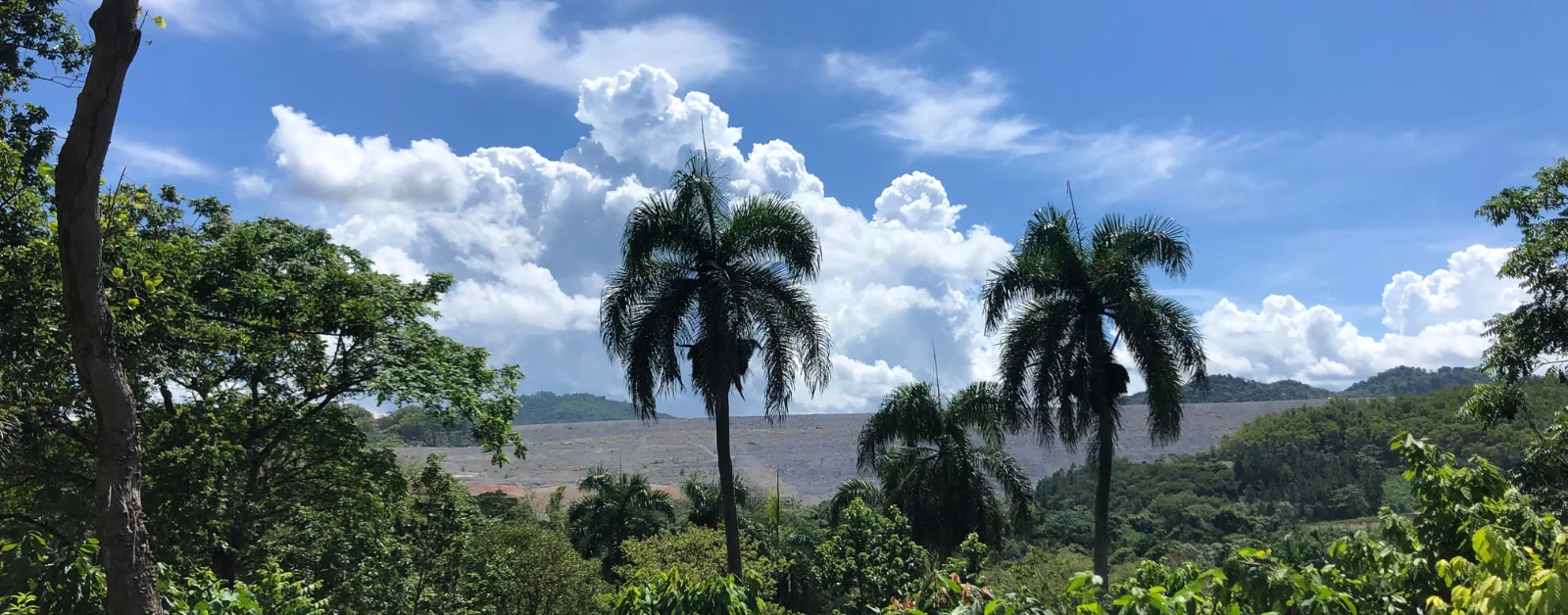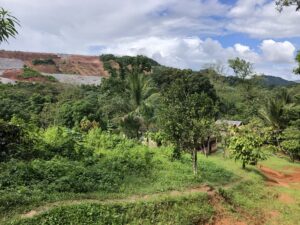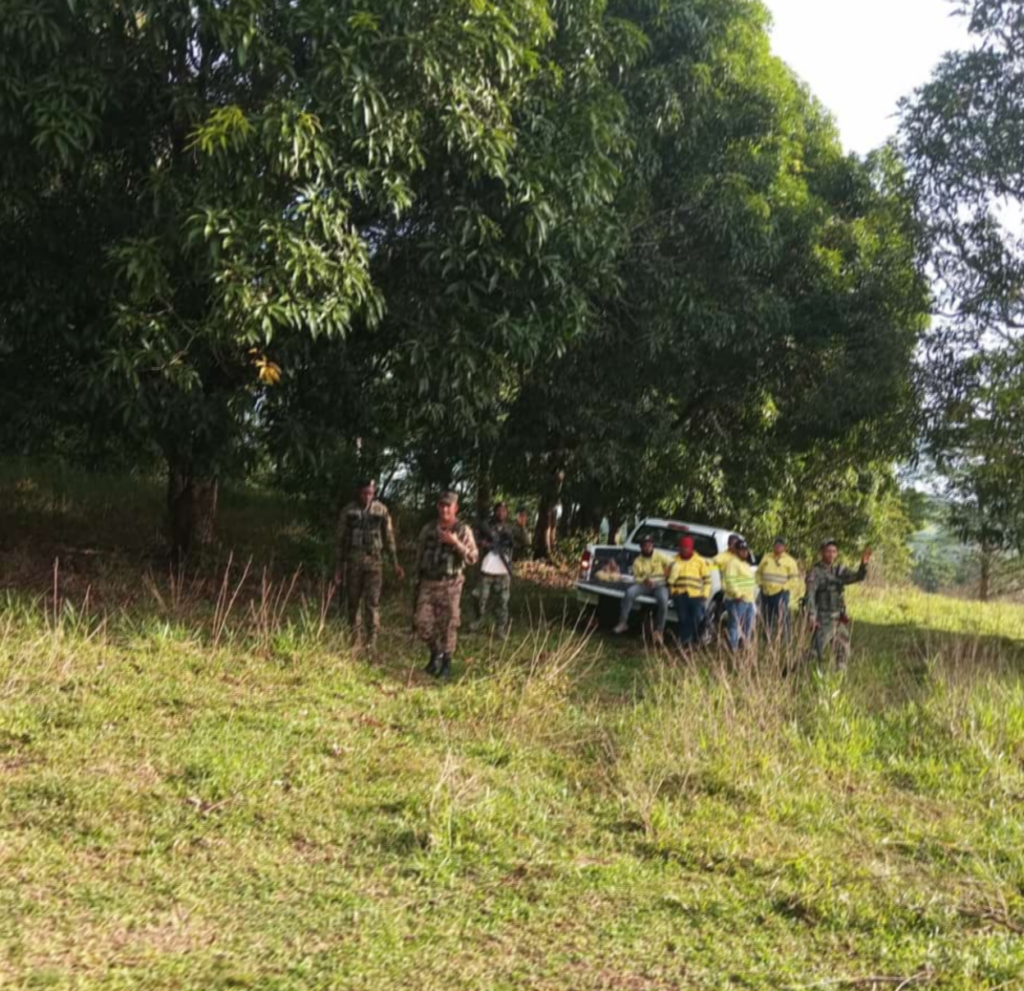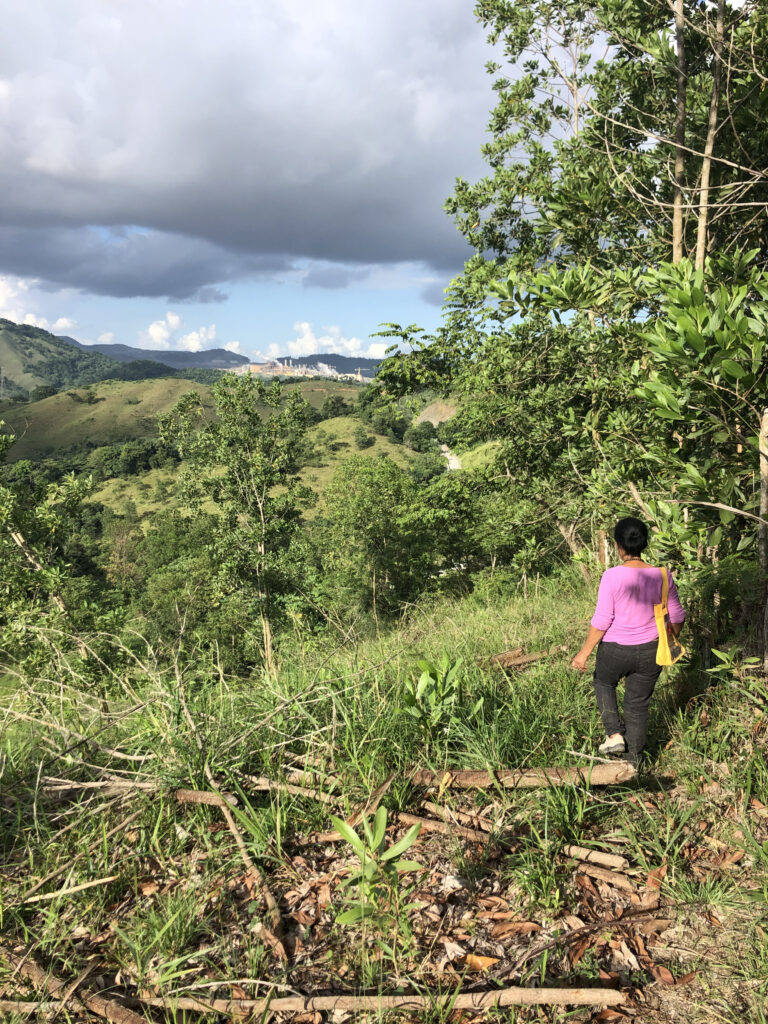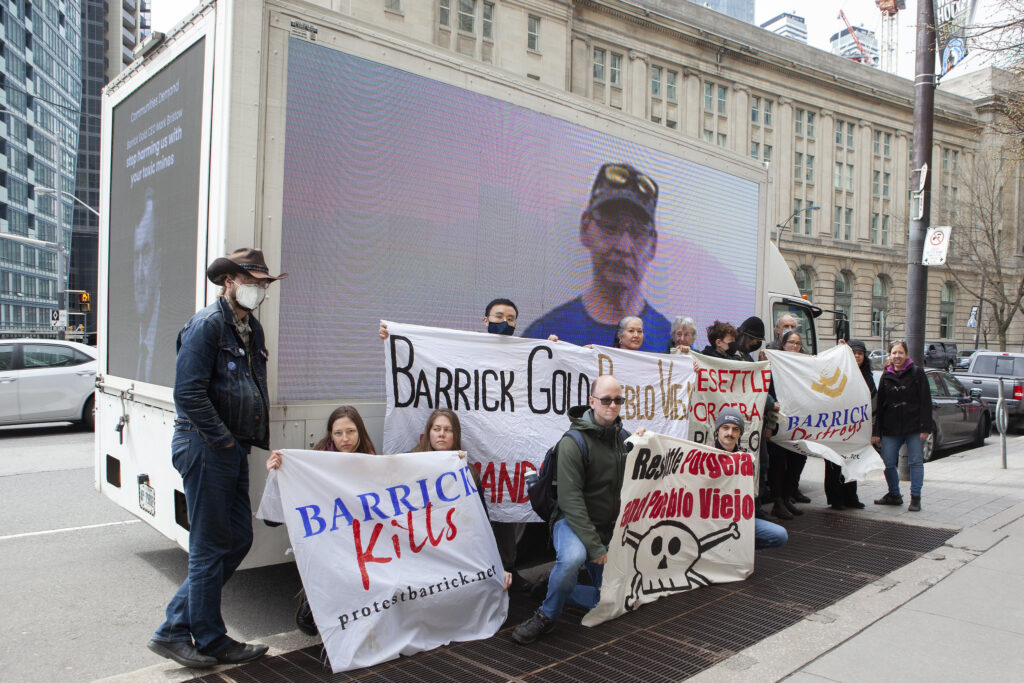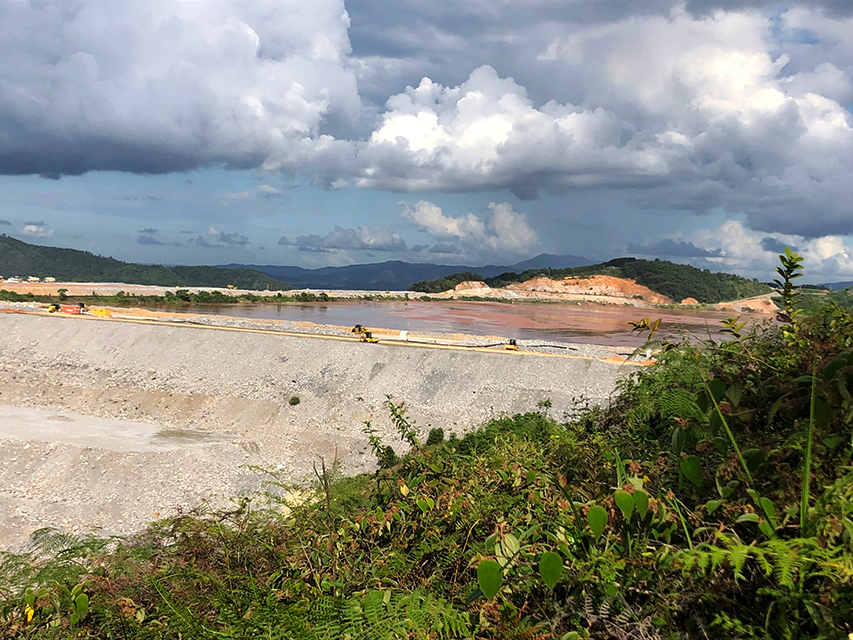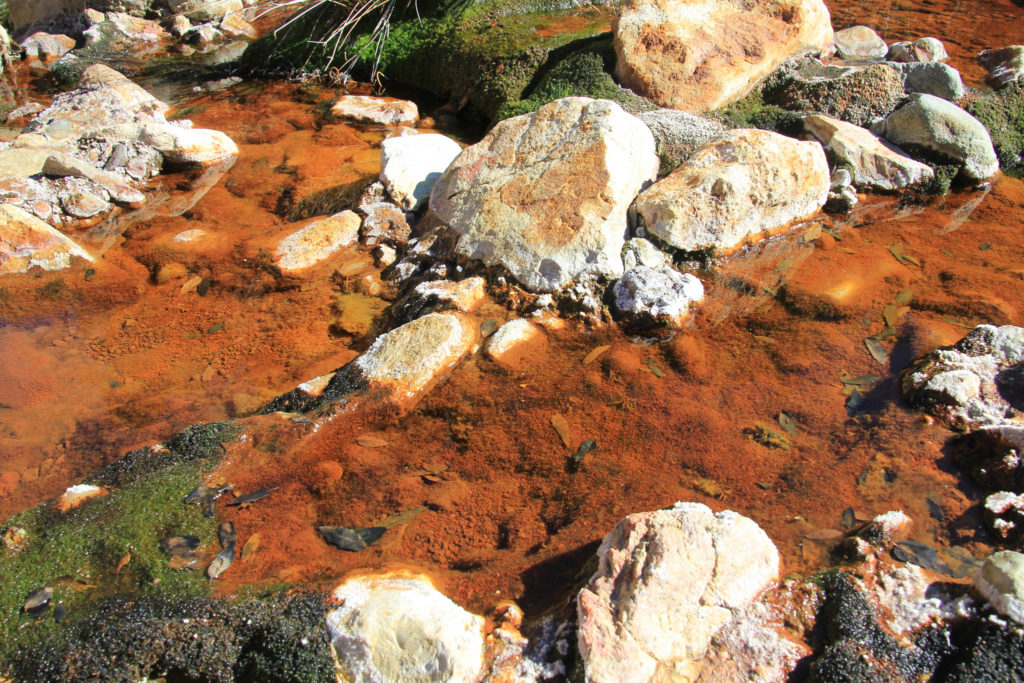Unfortunately, legacy and current environmental contamination continue to impact downstream communities significantly. The mine’s 114m tall tailings dam, called El Llagal, looms over the area, holding toxic waste from the mine. Communities downstream from the Pueblo Viejo mine feel the effects of living in such proximity.
Residents reported having to clean their houses daily to remove a layer of black dust that accumulates on every surface. Because of water contamination, communities have received bottled water for drinking and food preparation since 2011, first from the company and then from the government. Each family receives only 15 gallons twice weekly, so they often rely on contaminated tap water for bathing and washing.
Community members also contend that local rivers have been contaminated with heavy metals and toxins. There have been multiple reports of livestock deaths after drinking water from rivers below the tailings dam. Crops have also been affected, and farmers say fruits like mangoes, plantains, oranges and cacao grow but rot on the plant before they are ready to be harvested. This has created a food desert where communities are forced to travel to buy basic staples they once could produce.
The Comité Nuevo Renacer (CNR) is an organization of five impacted communities—La Cerca, La Piñita, Las Lagunas, Jobo Claro, and Jurungo—advocating for relocation in response to the environmental and health problems associated with living next to the mine. At the insistence of the CNR and residents, the Dominican government carried out a census that identified 369 families in the region that should qualify for relocation. However, to date, families have been unable to complete the relocation process. The CNR has worked with partners like the Espacio Nacional por la Transparencia de la Industria Extractivas (ENTRE) to develop a community-centered relocation plan, but the government has not acted.
“Barrick says they bring progress, but we are one of the poorest provinces in the country, even though we live next to one of the largest gold mines in the world…We want to ask: if the company is allowed to destroy the streams and rivers that provided water to five communities, why haven’t there been any efforts to relocate us to another area without all of the pollution and with access to water?” — Leoncia Ramos, Comité Nuevo Renacer, Cotuí, Dominican Republic.
Barrick Gold has proposed an expansion project that would triple the land the company leases for its mining operations and create a second tailings dam. The second dam, called the Naranjo tailings storage facility, would be another huge mine waste dump. To build this new tailings dam, six communities must be relocated: Arroyo Vuelta, Las Lajas, Tres Bocas, Dos Palmas, La Placeta y La Jagua Mocha. An independent review of the expansion plans found that the company failed to consider the safest options for waste management and the environmental review was incomplete. The six communities comprise hundreds of families at risk of relocation. Community members have been protesting the number of families that would be resettled and demanding adequate compensation for their crops.

